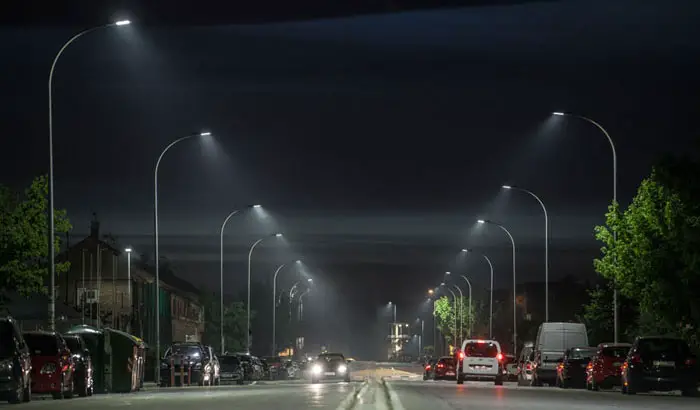Street lighting is a crucial aspect of urban infrastructure. It not only improves visibility and safety for pedestrians and drivers at night, but it also helps to deter crime and increase the overall aesthetic of a neighbourhood. In recent years, LED (light-emitting diode) street lights have become increasingly popular as a replacement for traditional street lighting systems. In this blog post, we will explore the pros and cons of using LED street lights in public areas.
Pros of LED Street Lights:
Energy Efficiency: One of the most significant advantages of LED street lights is their energy efficiency. LED lights use significantly less energy than traditional street lights, which can lead to significant cost savings for municipalities. In addition, LED lights have a longer lifespan than traditional street lights, which means they will need to be replaced less frequently.
Improved Visibility: LED street lights provide a brighter and more natural light than traditional street lights, which can improve visibility and safety for pedestrians and drivers. This is especially beneficial in areas with high levels of foot and vehicle traffic.
Low Maintenance: LED lights require less maintenance than traditional street lights. They have a longer lifespan and are less likely to burn out, which means they will need to be replaced less frequently. This can save municipalities money on maintenance costs.
Environmentally Friendly: LED street lights are also more environmentally friendly than traditional street lights. They emit fewer carbon emissions and do not contain any toxic materials, making them a more sustainable option. Additionally, they consume less energy, which reduces the overall carbon footprint of the municipality.
Smart Control: LED street lights can be controlled through smart technology, which allows municipalities to manage and monitor the lights remotely. This can include adjusting brightness levels, turning lights on or off based on activity, and troubleshooting issues. This not only improves efficiency but also allows for proactive maintenance and repair.
Durability: LED street lights are more durable than traditional street lights, making them less likely to be damaged or vandalized. Additionally, due to their long lifespan, the need for frequent replacement is reduced, which can be a cost saver for municipalities.
Cons of LED Street Lights:
Initial Cost: One of the main downsides of LED street lights is the initial cost. While they can save municipalities money in the long run through energy and maintenance savings, the initial cost of purchasing and installing LED street lights can be high.
Light Pollution: LED street lights can contribute to light pollution, which can be harmful to the environment and disrupt the natural sleep patterns of animals. Additionally, LED street lights can cause glare, which can be dangerous for drivers.
Quality of Light: While LED street lights can provide a brighter and more natural light than traditional street lights, the quality of the light can be inconsistent. This can be especially problematic in areas where light quality is important for security or surveillance.
Conclusion
LED street lights have many advantages over traditional street lights, including energy efficiency, improved visibility, and low maintenance. However, there are also downsides to consider, such as the initial cost, potential light pollution, and the quality of light. Ultimately, municipalities should weigh the pros and cons of LED street lights and consider factors such as cost, safety, and environmental impact when making a decision on whether to install LED street lights in public areas.






